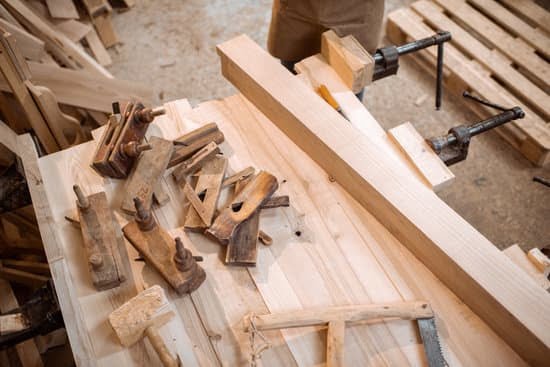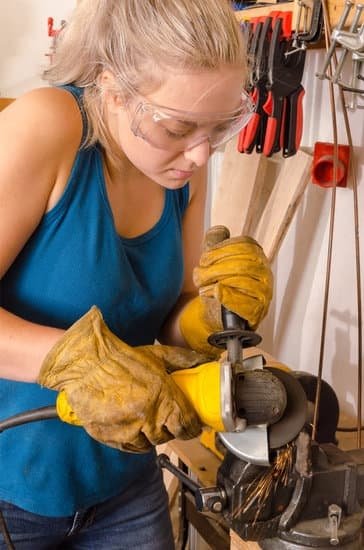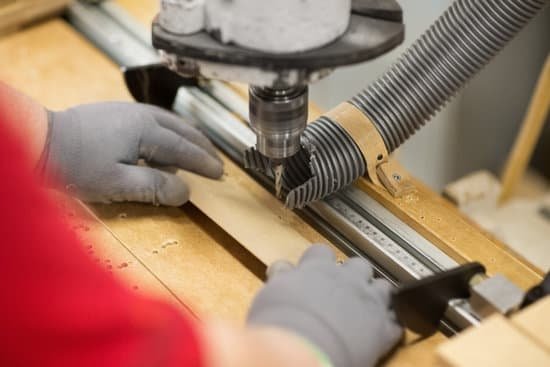Hickory is a popular choice for woodworking due to its strength, durability, and unique grain patterns. Many woodworkers consider hickory as an excellent option for various woodworking projects, such as furniture, cabinets, flooring, and tool handles. Its robust nature and attractive appearance make it a preferred material for both functional and decorative pieces.
Hickory wood offers a combination of hardness, stiffness, and durability that makes it suitable for a wide range of woodworking applications. Its distinctive light color with reddish-brown hues adds visual appeal to finished products. In addition to its aesthetic value, hickory is also known for its resistance to wear and tear, making it an ideal choice for high-traffic areas or items that require longevity.
In this article, we will explore the properties of hickory wood, its uses in woodworking, the advantages and disadvantages of using hickory wood for various projects, as well as tips for working with this particular type of wood. Whether you are a seasoned woodworker or just starting out in the craft, understanding the characteristics of hickory wood can help you make informed decisions when selecting materials for your next woodworking project.
Properties of Hickory Wood
Hickory wood is a popular choice for woodworking due to its unique properties that make it suitable for a variety of projects. Below are some key properties of hickory wood:
1. Strength and Durability: Hickory wood is known for its exceptional strength and durability, making it an excellent choice for furniture, flooring, and tool handles. Its resistance to wear and tear makes it ideal for high-traffic areas.
2. Shock Resistance: Hickory wood has the ability to absorb shock, which makes it a preferred option for items such as baseball bats, bows, and drumsticks. Its ability to withstand impact makes it an ideal choice for items that require resilience.
3. Grain Pattern: Hickory wood has a distinct grain pattern with variations in color, ranging from light to dark brown. This unique appearance adds visual interest to woodworking projects and can enhance the overall aesthetic of the finished product.
4. Workability: While hickory wood is known for its strength, it can be challenging to work with due to its density. It requires sharp tools and careful attention during the shaping and finishing process.
5. Sustainability: Hickory trees are abundant in North America, making hickory wood a sustainable option for woodworking projects.
Uses of Hickory Wood in Woodworking
Hickory wood is popularly used in woodworking for various applications due to its durability, strength, and beautiful grain patterns. Below are some common uses of hickory wood in woodworking:
1. Furniture making: Hickory wood is often used to make high-quality furniture such as chairs, tables, cabinets, and beds. Its strength and shock resistance make it a popular choice for pieces that are meant to withstand heavy daily use.
2. Flooring: Hickory wood is also commonly used for hardwood flooring due to its durability and ability to withstand wear and tear. Its natural beauty adds a rustic charm to any room.
3. Tool handles: The toughness and shock resistance of hickory wood make it an ideal choice for tool handles such as axes, hammers, and picks. Woodworkers appreciate the reliability and sturdiness that hickory provides for these essential tools.
4. Smoking meats: In addition to traditional woodworking, hickory wood is also prized by pitmasters for smoking meats. The unique flavor profile it imparts to food makes it a favorite among barbecue enthusiasts.
Overall, hickory wood’s versatility makes it a sought-after material for various woodworking projects ranging from functional items like furniture and tools to decorative accents like wooden bowls and cutting boards.
Advantages of Using Hickory Wood for Woodworking
Hickory wood is a popular choice for woodworking, and for good reason. Its strength, durability, and unique aesthetic make it an excellent option for a wide range of woodworking projects. In this section, we will explore the various advantages of using hickory wood in woodworking.
Strength and Durability
One of the key advantages of using hickory wood for woodworking is its exceptional strength and durability. Hickory is known for being one of the toughest and hardest woods available, making it ideal for projects that require a strong and sturdy material. This makes it particularly well-suited for furniture, flooring, tool handles, and other applications where resilience is essential.
Beautiful Grain and Color
Another advantage of using hickory wood in woodworking is its beautiful grain patterns and rich natural color. Hickory features a striking contrast between light sapwood and dark heartwood, creating visually appealing designs in finished products. The grain pattern of hickory also adds character and charm to any woodworking project, making it a popular choice for decorative pieces as well as functional ones.
Versatility
Hickory wood’s versatility is another major advantage when it comes to woodworking. It can be machined easily, allowing for intricate detailing and design work. Additionally, hickory takes stains and finishes well, giving woodworkers the flexibility to achieve their desired look with ease. Whether you’re building cabinets, chairs, or cutting boards, hickory provides versatility that makes it a top choice for many woodworking enthusiasts.
Disadvantages of Using Hickory Wood for Woodworking
Hickory wood is widely used in woodworking due to its strength, durability, and attractive grain pattern. However, it is important to consider the disadvantages of using hickory wood for woodworking projects. One of the main disadvantages is its hardness, which can make it difficult to work with hand tools. The density and toughness of hickory can also cause blunting of cutting edges and tools when working with this type of wood.
Another disadvantage of using hickory wood for woodworking is its tendency to split or warp if not properly seasoned or dried. This means that extra care must be taken during the drying process to prevent these issues from occurring. Additionally, hickory wood can be challenging to finish due to its natural oils, which can make it resistant to certain types of finishes and coatings.
Furthermore, another potential drawback when using hickory wood for woodworking is its cost. Hickory is considered a premium hardwood, and therefore it tends to be more expensive compared to other types of wood commonly used in woodworking. This cost factor may make it less accessible for hobbyist woodworkers on a budget.
Despite these disadvantages, many experienced woodworkers still choose hickory for their projects due to its unique character and strength. With the right techniques and precautions, these challenges can be overcome, making hickory a worthwhile choice for certain woodworking projects.
Tips for Working With Hickory Wood
Hickory wood is a popular choice for woodworking due to its strength, durability, and attractive appearance. However, working with hickory can present some challenges for woodworkers. In this section, we will provide you with some tips for working with hickory wood to help you achieve the best results in your woodworking projects.
Selecting the Right Tools
When working with hickory wood, it’s important to use sharp cutting tools to prevent tear-out and splintering. Due to its dense and hard nature, hickory can dull blades more quickly than other types of wood. Make sure to have extra sharpened blades on hand and be prepared to frequently sharpen your tools when working with hickory. Additionally, using carbide-tipped saw blades and drill bits is recommended for cutting through the tough fibers of hickory.
Preventing Splitting
One challenge when working with hickory is its tendency to split when nailing or screwing. To prevent splitting, it’s crucial to pre-drill holes before inserting nails or screws into the wood. This will help reduce the likelihood of splitting and cracking, ensuring that your woodworking project remains intact.
Finishing Techniques
Due to its dense grain, hickory can be difficult to stain evenly. Prior to applying any finish, it is recommended to use a pre-stain conditioner on the wood to promote even absorption of the stain. Additionally, using an oil-based finish rather than water-based will enhance the natural beauty of the hickory wood.
By following these tips for working with hickory wood, you can overcome some of the challenges associated with this durable and beautiful material and create stunning woodworking projects that showcase the unique qualities of hickory.
Examples of Projects Using Hickory Wood
Hickory wood is a popular choice among woodworkers due to its strength, durability, and beautiful aesthetic. Its hardness and shock resistance make it an ideal material for a variety of projects, from furniture to tool handles to flooring. One common use of hickory in woodworking is for creating cabinets and kitchen countertops. The wood’s natural beauty and strength make it an excellent choice for these high-traffic areas.
Another popular use of hickory wood in woodworking is for creating musical instruments such as drumsticks, guitar bodies, and piano parts. The density and resonance of hickory make it an ideal material for musical instruments, providing a rich tone and excellent durability. Additionally, hickory is often used for creating decorative wooden handles for tools such as axes, hammers, and knives due to its strength and shock resistance.
Hickory can also be used in smaller woodworking projects such as cutting boards, bowls, and other kitchen utensils. The beautiful grain patterns and durability of hickory make it a great choice for items that will be subjected to wear and tear in the kitchen. Overall, hickory’s versatility and strength make it a valuable resource for woodworkers looking to create long-lasting, beautiful pieces.
| Project | Application |
|---|---|
| Kitchen Cabinets | Cabinetry |
| Drumsticks | Musical Instruments |
| Cutting Boards | Kitchen Utensils |
Conclusion
In conclusion, hickory wood is indeed good for woodworking due to its many desirable properties and uses. Its high strength, durability, and shock resistance make it an excellent choice for a variety of woodworking projects. Whether it’s for making furniture, cabinets, flooring, or tool handles, hickory wood provides the necessary strength and stability for long-lasting results.
While there may be some challenges in working with hickory wood, such as its hardness and difficulty in shaping and finishing, the advantages far outweigh the disadvantages. With proper techniques and tools, these challenges can be overcome to create beautiful and functional pieces of woodworking.
Overall, hickory wood is a valuable material for woodworking projects. Its versatility and reliability make it a popular choice among woodworkers who appreciate its unique grain patterns and strength. Whether you’re a seasoned professional or a beginner in woodworking, considering hickory wood for your next project is definitely worth exploring.
Frequently Asked Questions
What Are the Disadvantages of Hickory Wood?
One of the disadvantages of hickory wood is its high level of hardness, which can make it difficult to work with using hand tools. Additionally, hickory wood can be challenging to stain and finish due to its uneven grain pattern.
Is Hickory a Good Wood for Woodworking?
Hickory is generally considered a good wood for woodworking due to its strength, durability, and shock resistance. It is often used in making tool handles, furniture, cabinets, flooring, and sports equipment. Its attractive grain patterns also make it popular for decorative woodworking projects.
Is Hickory Hard to Work With?
Hickory can be hard to work with due to its density and toughness. It requires sharp cutting tools and may dull cutting edges faster than other types of wood. However, woodworking enthusiasts who appreciate the unique characteristics of hickory are willing to put in the extra effort required to work with this challenging but rewarding wood.

Hi everyone! I’m a woodworker and blogger, and this is my woodworking blog. In my blog, I share tips and tricks for woodworkers of all skill levels, as well as project ideas that you can try yourself.





